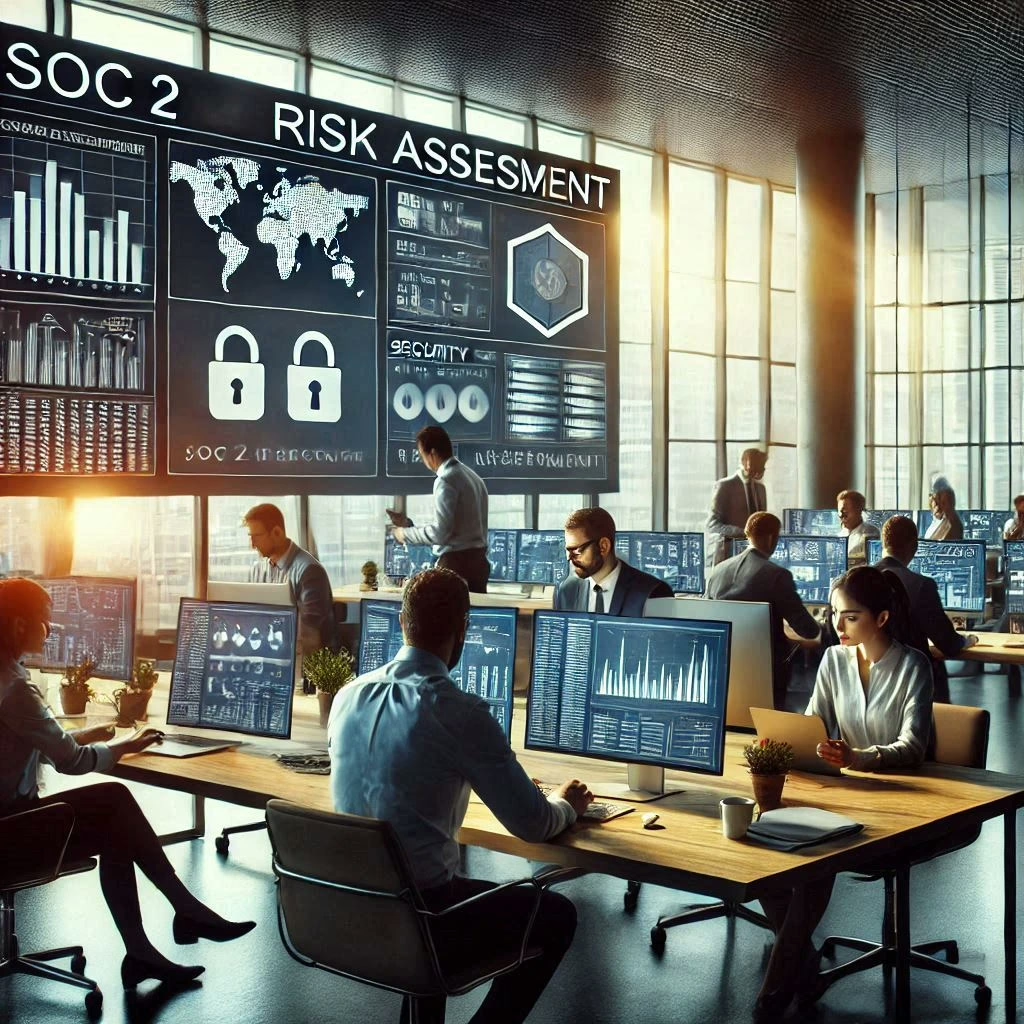In the rapidly evolving landscape of business operations, Robotic Process Automation (RPA) has emerged as a transformative technology that is reshaping various functions, including internal audit. This blog aims to provide a foundational understanding and auditing of RPA.
Definition of RPA (Robotic Process Automation)
Robotic Process Automation (RPA) refers to the use of software robots or “bots” to automate repetitive and rule-based tasks that are typically performed by humans. These tasks can range from data entry and processing to more complex workflows across various business functions such as finance, accounting, and compliance. RPA is designed to enhance efficiency, reduce errors, and free up human resources for more strategic activities, making it an attractive solution for organizations looking to optimize their operations [11].
Overview of the Internal Audit Function
The internal audit function plays a vital role in ensuring the integrity of an organization’s operations, risk management, and compliance with regulations. Internal auditors assess the effectiveness of internal controls, evaluate risk management processes, and provide insights that help organizations achieve their objectives. Traditionally, internal audit has involved manual processes that can be time-consuming and prone to human error. However, the integration of technology, particularly RPA, is revolutionizing how internal audits are conducted [3][12].
The Intersection of RPA and Internal Audit: Why It Matters
The convergence of RPA and internal audit is significant for several reasons:
- Enhanced Efficiency: RPA can automate routine audit tasks, allowing auditors to focus on more strategic activities that require human judgment and expertise. This shift not only improves efficiency but also enhances the overall quality of audits [3][11].
- Improved Risk Management: By leveraging RPA, internal auditors can gain deeper insights into business processes and identify key risk areas more effectively. This capability is crucial in a landscape where risks are constantly evolving due to technological advancements and regulatory changes [2][12].
- Strategic Value Creation: The adoption of RPA enables internal audit functions to move beyond traditional compliance roles and embrace a more innovative approach. This shift allows auditors to contribute to strategic value creation within the organization by identifying opportunities for process improvement and automation [8][12].
- Collaboration and Advisory Role: As organizations increasingly adopt RPA, internal auditors have the opportunity to position themselves as trusted advisors. They can collaborate with business leaders to enhance the control environment and ensure that RPA implementations align with organizational goals [12][13].
The integration of RPA into the internal audit function is not just a trend; it represents a fundamental shift in how audits are conducted. By embracing RPA technologies, internal audit leaders can enhance their effectiveness, improve risk management, and contribute to the strategic objectives of their organizations. As the future of internal audit unfolds, understanding and leveraging RPA will be essential for C-suite executives and audit leaders alike.
Current Challenges in Internal Audit
The internal audit function is undergoing significant transformation, particularly with the advent of Robotic Process Automation (RPA). However, internal audit teams continue to face several challenges that RPA technologies can effectively address. Here are some of the key issues:
- Manual Processes and Inefficiencies: Internal audit teams often rely on manual processes for data collection and analysis, which can be time-consuming and prone to human error. RPA can automate repetitive tasks such as data entry and reconciliation, significantly reducing the time auditors spend on these activities and allowing them to focus on more strategic tasks [3][11].
- Data Accuracy and Integrity Issues: Ensuring the accuracy and integrity of data is paramount in auditing. Manual handling of data increases the risk of errors, which can lead to inaccurate audit findings. RPA can enhance data accuracy by automating data extraction and processing, thereby minimizing the risk of human error and ensuring that the data used in audits is reliable [4][10].
- Limited Resources and Bandwidth for Audit Teams: Many internal audit teams operate with limited resources, which can hinder their ability to conduct thorough audits. RPA can help alleviate this issue by automating routine tasks, thereby freeing up auditors to focus on higher-value activities. This not only improves efficiency but also enhances the overall effectiveness of the audit function [2].
- Need for Real-Time Insights and Reporting: In today’s fast-paced business environment, the demand for real-time insights and reporting is greater than ever. Traditional audit processes often result in delays in reporting, which can impact decision-making. RPA can facilitate real-time data analysis and reporting, enabling audit teams to provide timely insights that are crucial for informed decision-making [1][12].
By addressing these challenges, RPA technologies are poised to transform the internal audit landscape, enabling audit teams to operate more efficiently and effectively while providing greater value to their organizations. Embracing RPA not only enhances the capabilities of internal auditors but also positions them as strategic partners in navigating the complexities of modern business environments.
The Role of RPA in Transforming Internal Audit
Robotic Process Automation (RPA) is revolutionizing the internal audit landscape by introducing efficiencies and capabilities that were previously unattainable. As C-suite executives and audit leaders seek to enhance their audit processes, understanding the transformative role of RPA is essential. Here are key points illustrating how RPA is reshaping internal audit functions:
- Automation of Repetitive Tasks: RPA excels at automating labor-intensive and repetitive tasks such as data entry and report generation. By deploying software robots, organizations can significantly reduce the time spent on these mundane activities, allowing auditors to focus on more strategic tasks that require human judgment and expertise. This shift not only enhances productivity but also frees up valuable resources within the audit team [1][7].
- Improved Accuracy and Reduction of Human Error: One of the most significant advantages of RPA is its ability to minimize human error. Traditional auditing processes often involve manual data handling, which can lead to inaccuracies. RPA ensures that data is processed consistently and accurately, thereby enhancing the reliability of audit outcomes. This improvement in accuracy is crucial for maintaining compliance and trust in financial reporting [3][4].
- Enhanced Data Analysis Capabilities: RPA tools can aggregate and analyze vast amounts of data from multiple sources quickly and efficiently. This capability allows internal auditors to gain deeper insights into business processes and identify anomalies or risks that may require further investigation. By leveraging RPA for data analysis, audit teams can enhance their decision-making processes and provide more valuable recommendations to management [3][10].
- Streamlined Audit Workflows and Faster Turnaround Times: The integration of RPA into audit workflows leads to streamlined processes and faster turnaround times for audit reports. With automated data collection and processing, audits can be completed more swiftly, enabling organizations to respond to issues and make informed decisions in real-time. This agility is particularly beneficial in today’s fast-paced business environment, where timely insights are critical for effective risk management [1][5][10].
The adoption of RPA technologies in internal audit not only enhances operational efficiency but also transforms the overall audit landscape. By embracing RPA, organizations can improve accuracy, enhance data analysis, and streamline workflows, ultimately leading to a more effective and responsive internal audit function. As the future of internal audit unfolds, leveraging RPA will be key to staying ahead in an increasingly complex regulatory environment.
Strategic Considerations for Implementing RPA in Internal Audit
As organizations increasingly adopt Robotic Process Automation (RPA) technologies, internal audit functions are undergoing significant transformations. For C-suite executives and audit leaders, understanding the strategic considerations for implementing RPA is crucial to harnessing its full potential. Here are key points to consider:
- Assessing Organizational Readiness and Culture: Before implementing RPA, it is essential to evaluate the organization’s readiness for such a technological shift. This includes assessing the existing culture, employee attitudes towards automation, and the overall technological infrastructure. A supportive culture that embraces change will facilitate smoother integration of RPA into internal audit processes, allowing teams to adapt more readily to new workflows and technologies [1].
- Identifying Processes Suitable for RPA: Not all processes are ideal candidates for RPA. C-suite executives and audit leaders should conduct a thorough analysis to identify repetitive, rule-based tasks that can be automated. This may include data entry, report generation, and compliance checks. By focusing on processes that are high-volume and low-complexity, organizations can maximize the efficiency gains from RPA while minimizing disruption to more complex audit activities [4][9].
- Setting Clear Objectives and KPIs for RPA Initiatives: Establishing clear objectives and key performance indicators (KPIs) is vital for measuring the success of RPA initiatives. C-suite executives should define what success looks like—whether it’s reducing processing time, increasing accuracy, or enhancing compliance. By setting measurable goals, organizations can track progress and make necessary adjustments to their RPA strategies, ensuring alignment with broader business objectives [2][10].
- Ensuring Compliance and Risk Management: The implementation of RPA must be accompanied by robust compliance and risk management frameworks. Organizations should embed governance, risk management, and controls into the RPA processes from the outset. This proactive approach helps mitigate potential risks associated with automation, such as data breaches or compliance failures, thereby safeguarding the organization’s integrity and reputation [5][9].
As RPA continues to reshape the internal audit landscape, C-suite executives and audit leaders must strategically navigate its implementation. By assessing readiness, identifying suitable processes, setting clear objectives, and ensuring compliance, organizations can effectively leverage RPA technologies to enhance their internal audit functions and drive greater value.
Future Trends: The Evolving Role of Internal Audit with RPA
The landscape of internal audit is undergoing a significant transformation, driven by the integration of Robotic Process Automation (RPA) technologies. As organizations increasingly adopt these advanced tools, the role of internal auditors is evolving to meet new demands and challenges. Here are some key trends shaping the future of internal audit in the context of RPA:
Integration of AI and Machine Learning with RPA
The combination of RPA with artificial intelligence (AI) and machine learning (ML) is revolutionizing internal audit processes. These technologies enable auditors to analyze vast amounts of data quickly and accurately, enhancing performance and precision in audits. By leveraging AI and ML, auditors can identify risky data points in real-time, allowing for proactive risk management and more informed decision-making [2][3]. This integration not only streamlines the auditing process but also enhances the overall effectiveness of internal controls.
Shift Towards Continuous Auditing and Monitoring
The traditional model of periodic audits is giving way to a more dynamic approach characterized by continuous auditing and monitoring. RPA facilitates this shift by automating routine tasks and enabling real-time data analysis. This allows internal auditors to maintain ongoing oversight of financial and operational processes, ensuring compliance and identifying issues as they arise [3][4]. Continuous monitoring enhances the ability to respond to emerging risks swiftly, thereby improving organizational resilience.
The Evolving Skill Set Needed for Internal Audit Professionals
As RPA technologies become more prevalent, the skill set required for internal audit professionals is also evolving. Auditors will need to develop competencies in data analytics, AI, and RPA tools to effectively leverage these technologies in their work. Continuous professional development will be essential for auditors to stay updated with the latest auditing standards, regulations, and technological advancements [6][10]. This shift emphasizes the importance of a tech-savvy workforce capable of navigating the complexities of modern auditing.
Potential Challenges and Barriers to Adoption
Despite the promising benefits of RPA in internal audit, several challenges and barriers to adoption remain. Organizations may face resistance to change from employees accustomed to traditional auditing methods. Additionally, there may be concerns regarding data security and compliance with regulatory requirements when implementing automated processes [8][12]. Addressing these challenges will be crucial for organizations to fully realize the potential of RPA in enhancing their internal audit functions.
The future of internal audit is poised for transformation as RPA technologies continue to evolve. By embracing these advancements, organizations can enhance their auditing processes, improve risk management, and ensure compliance in an increasingly complex business environment. C-suite executives and audit leaders must recognize the importance of adapting to these changes to maintain a competitive edge and drive organizational success.
Conclusion: Preparing for the RPA Revolution in Internal Audit
As we look towards the future of internal audit, it is clear that Robotic Process Automation (RPA) is not just a passing trend but a transformative force reshaping the landscape of auditing. The integration of RPA into internal audit functions offers several significant advantages:
- Enhanced Efficiency: RPA automates labor-intensive and repetitive tasks, allowing internal audit teams to focus on more strategic activities. This shift not only improves productivity but also enhances the accuracy of audits by minimizing human error [1][9].
- Improved Data Management: One of the primary challenges in auditing is the collection and management of data, which can often be time-consuming and prone to errors. RPA streamlines this process, enabling faster and more accurate data collection from various systems, thus improving overall audit compliance.
- New Testing Approaches: The adoption of RPA necessitates the development of new testing methodologies within internal audit. This evolution allows auditors to leverage their knowledge of RPA to identify opportunities for embedding automation-enabled controls, thereby enhancing the control environment as business processes are redesigned [2][3].
- Positioning as Trusted Advisors: By understanding and controlling RPA risks, internal audit can position itself as a trusted advisor within the organization. This role is crucial as businesses increasingly embrace automation, and audit leaders must collaborate with other functional units to ensure effective governance and risk management [5][6].
In light of these transformative impacts, it is imperative for C-suite executives and audit leaders to take proactive steps towards embracing RPA technologies. Here are some actionable recommendations:
- Invest in RPA Training: Equip your audit teams with the necessary skills and knowledge to effectively implement and manage RPA technologies. Continuous education will be key to staying ahead in this rapidly evolving landscape.
- Stay Informed on RPA Advancements: The field of RPA is constantly evolving, with new tools and methodologies emerging regularly. Audit leaders should commit to staying informed about these advancements to leverage the full potential of RPA in their audit processes [10][12].
- Foster a Culture of Innovation: Encourage a mindset that embraces change and innovation within the audit function. This cultural shift will facilitate the adoption of RPA and other emerging technologies, ensuring that your organization remains competitive and resilient in the face of future challenges [11].
In conclusion, the RPA revolution in internal audit is not just about technology; it is about rethinking how audits are conducted and how value is delivered to the organization. By embracing RPA, internal audit can enhance its effectiveness, provide greater insights, and ultimately contribute to the overall success of the business. The time to act is now—prepare for the future of internal audit by embracing the opportunities that RPA presents.
Find out more about Shaun Stoltz https://www.shaunstoltz.com/about/
This post was written by an AI and reviewed/edited by a human.



